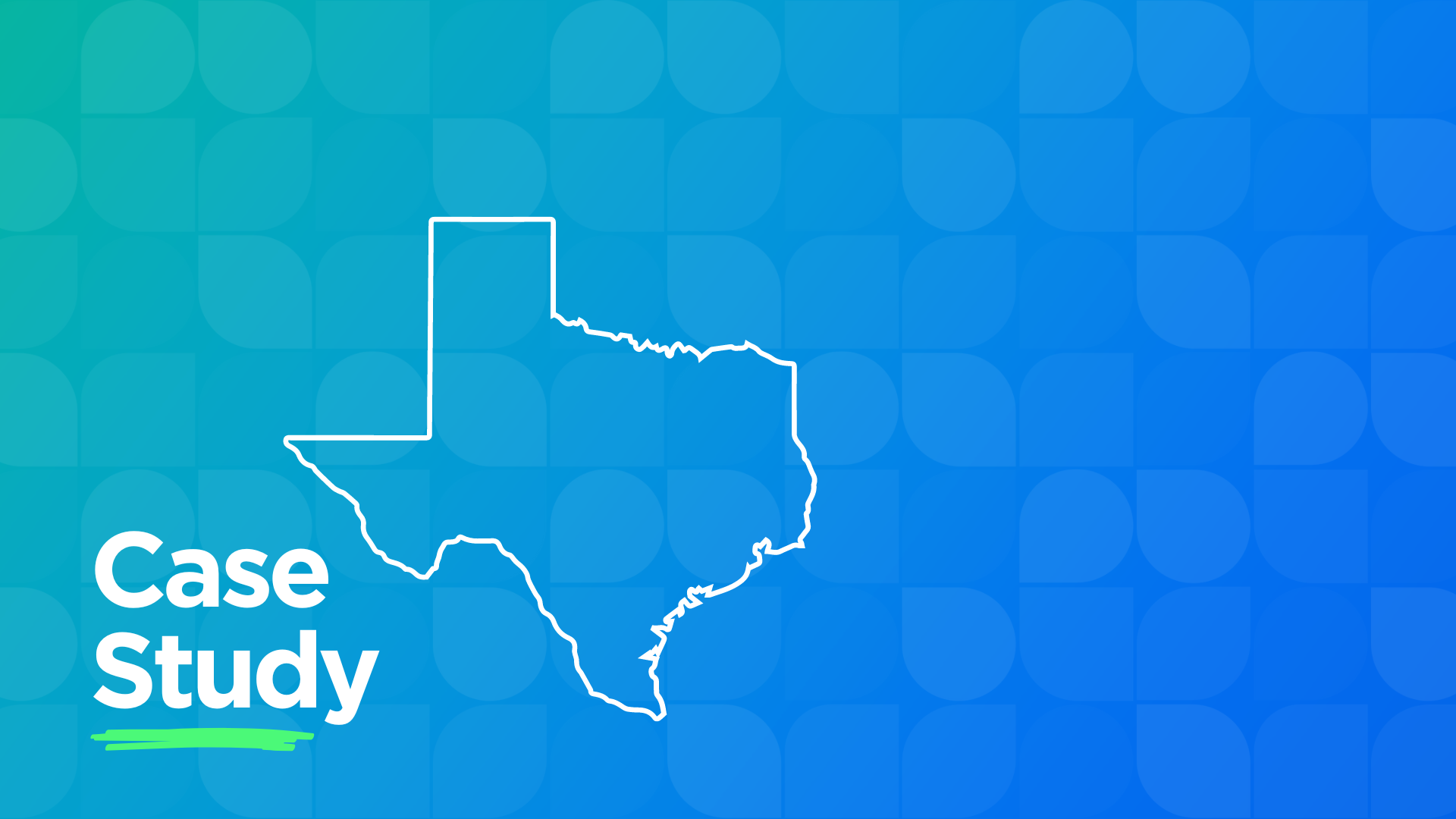Canyon Independent School District: Streamlining Coaching to Improve Student Performance
Location: Canyon, TX
Website: Canyon Independent School District
Enrollment: 10,000+ students
Size: 21 schools
SchoolMint Grow user since 2022
Background
Canyon Independent School District (Canyon ISD) is a 21-school district that sits high in North Texas, supported by the Region 16 Education Service Center (ESC). Region 16 is but one of 20 total ESCs in Texas.
One of the functions of each ESC is to offer training and support to districts through the Texas Instructional Leadership (TIL) program, which provides professional development that’s largely aligned with the coaching methodologies outlined in Paul Bambrick-Santoyo’s Get Better Faster and Leverage Leadership books.
While many of the districts who choose to participate in TIL services do so as part of their school improvement plan, Canyon ISD (an A-rated district) saw how invaluable TIL could be to both their staff and students.
Canyon ISD sent their first cohort of coaches, principals, and principal managers through TIL’s Observation and Feedback training in the 2021–2022 school year. And the district saw early promise: positive outcomes with the newly implemented Get Better Faster coaching model, buy-in from principals, and a fast-developing culture of coaching.
Challenge
Canyon ISD’s early positive results with TIL made it an easy decision to send the second half of their campuses through TIL’s Observation and Feedback training in 2022–2023.
The training provided exactly what the district’s instructional leaders needed to be successful — but when it came to the logistics and processes side of coaching, Canyon ISD faced major headaches implementing new coaching methodologies:
- Internalizing a common coaching language across the district — an intense, elaborate process that requires memorizing new terminology, scripting, etc.
- Managing coaching conversations across all 21 campuses
- Spending excessive time on traditionally manual tasks (e.g., principals writing weekly coaching plans and observation debriefs)
- Ensuring follow up and tracking mastery on assigned action steps
- Gathering, analyzing, and reporting data on the district’s coaching initiatives
“With the TIL structure, you have to write a coaching plan for every coaching conversation you have. It won’t be an effective conversation if there’s not plan in place,” says Cameron Rosser, Assistant Superintendent of Curriculum and Instruction. “So in our first year with TIL, we used Google folders and Google Docs. Each principal would start by making copies of those folders and documents for writing coaching plans.”
Unfortunately, to close each coaching and observation cycle, there were multiple, very manual steps campus principals had to take every time for every teacher observed:
- First, when writing their coaching plans, principals would have to pull out the script that TIL gave them. They’d have to retype the script and make adjustments for the specific coaching plan.
- Next, the principal would have to give the teacher their action step in one place, then copy and paste that action step into a different spreadsheet for district-wide tracking.
- At the end of that coaching cycle, the principal would have to revisit multiple locations to update the status of action steps and coaching cycle progress.
“Using those Google folders and docs was effective enough, but it took up a lot of our principals’ time, and it made collecting data difficult,” Rosser says.
Moreover, finding a way to bridge the gap between coaching and evaluation conversations (i.e., showing teachers how short-term coaching has a positive impact on long-term goals) proved challenging.
As the district’s pain points grew, the need for an efficient, integrated, data-driven solution — a teacher coaching and observation platform that would, most importantly, support the positive instructional growth they were seeing with TIL and Get Better Faster coaching — became evident.
“We had to make a change,” says Rosser.
And to do that, he decided Canyon ISD would lean into a tool used not just by TIL districts across Texas but also by Get Better Faster districts across the country.
Solution
As Canyon began sending their second cohort of campuses through TIL’s observation and feedback training in 2022–2023, their first cohort began a pilot of the teacher coaching software SchoolMint Grow.
As they learned firsthand, SchoolMint Grow — the recommended platform for Get Better Faster coaching — could facilitate not just the district’s entire coaching process but also fold in their evaluation procedures. While some districts prefer to intentionally separate coaching and evaluation systems, others (like Canyon ISD) prefer everything in one place.
SchoolMint Grow also solved the other pain points the district was experiencing, enabling principals to:
- Effectively conduct classroom walkthroughs and complete follow-ups
- Assign, track, and manage action steps
- Easily collect coaching data
- Quickly develop coaching plans
“We constantly tell our principals they’ve got to be in classrooms, delivering their coaching plans. And if they’re not stuck in their office writing coaching plans, they’ll actually be in classrooms more. SchoolMint Grow has given them back that time and made coaching more efficient and easier for them,” Rosser says.
“A principal might go into three classrooms. Let’s say all three teachers need to be coached on the same thing. Instead of writing multiple plans, the principal can write one plan, duplicate it in SchoolMint Grow, and change only the names. Not having to go into another system to do that — instead having it all in one place — has been huge for us.”
SchoolMint Grow has been a lifesaver in helping us with writing coaching plans. When our district began the coaching cycles with teachers, coaching teachers was the easy part. The plan writing was the tedious piece. SchoolMint Grow took the guesswork out of writing coaching plans with the templates being right at my fingertips, and the ease of drop boxes for finding action steps was wonderful!”
Krystal Hare
Principal of Lakeview Elementary
Additionally, having everything in one place benefited the district in their principals’ desire to house coaching and evaluation in one system. On this front, SchoolMint Grow offered the perfect unified solution.
“[Our evaluation system] wasn’t doing anything wrong,” Rosser explains. “But if you’re a district that wants to put coaching and evaluation in one place, an evaluation system is a really tough spot to combine them. For what we needed, our previous system was clunky and not responsive to our needs.”
As mentioned earlier, many districts keep separate systems for evaluation and coaching, but Canyon ISD needed to combine their processes: “Before SchoolMint Grow, our principals were already calling for one system, so when we saw SchoolMint Grow in action, we saw the merger between coaching and evaluation,” Rosser says.
“Merging those processes meant we could be more efficient in our conversations and with our time. Plus, using one system means we have fewer software packages for teachers to interact with. Overall, SchoolMint Grow helps us function better as a district.”
Note: Canyon ISD uses Title II funding for SchoolMint Grow. Title II funds can be used to purchase the platform since SchoolMint Grow supports effective instruction and leadership.
Results
After receiving such positive feedback about SchoolMint Grow from the first cohort, Canyon ISD decided to move forward with full district-wide implementation for the 2023–2024 school year.
In their first year of full implementation, SchoolMint Grow has yielded significant improvements in instructional leadership, teacher support, and students’ academic growth at Canyon ISD:
1. Greater Efficiency and Time Savings
Principals at Canyon ISD have reported significant time savings in creating coaching plans, allowing them to allocate more time to classroom observations and teacher support activities.
“There are so many things on a principal’s plate that if SchoolMint Grow can save them just one hour per week in creating coaching plans, that’s huge. That adds up to better things happening in the classroom.”
Video: SchoolMint Grow and Get Better Faster Coaching
SchoolMint Grow supports Get Better Faster coaching, featuring tools for See It, Name It, Do It scripting — and much, much more. Watch the video below to see these tools in action!
2. A 667% Increase in Action Steps
The district witnessed a substantial increase in recorded action steps — going from 180 to more than 1,400 in one school year. Year over year, this 667% increase has provided district leadership with valuable insights into instructional trends and district-wide areas for improvement.
3. Data-Driven District Decision-Making
Now that Canyon ISD has a culture of providing action steps, they’re excited to begin using SchoolMint’s Get Better Faster report (example below).

This report is commonly used to inform weekly and monthly PD decisions (e.g., see what action step phases most teachers are working to know what would be highest leverage to model for the group).
Canyon ISD will leverage these analytics to:
- Track that teachers are moving along the Get Better Faster scope and sequence
- Ensure that coaches begin coaching to rigor as the year progresses
- Pivot as a team if those things aren’t happening
“We can see trends at the district level. Last year, one of the things we saw was that as the year went on, our action steps went from the management side of the Get Better Faster framework to the rigorous side — which is exactly what I want to see,” Rosser explains.
4. Positive Impact on Student Performance
Schools with higher engagement and utilization of SchoolMint Grow reported improved student performance and growth, indicating a direct correlation between effective instructional leadership and student achievement.
“What we’ve seen in our performance and growth data is that campuses with the most coaching plans, that have the most walkthroughs, that have the most conversations in the system — those schools have higher performance data. And it’s the inverse for the campuses that don’t have as much data in SchoolMint Grow. We see a direct correlation: when campus principals are in the classroom coaching teachers, it has an impact on instruction, which has a positive impact on student achievement.”
As for what’s to come, Rosser says, “We fully intend to continue with TIL and are moving into Lesson Alignment and Formative Assessment (LAFA) training with them. We have no plans to stop coaching teachers. That’s become who we are and what we hang our hat on, and I see SchoolMint Grow as our system for doing it all.”
What gains in student performance will you see with SchoolMint Grow?
Click to learn more about SchoolMint Grow — and why it’s the number one teacher coaching software for districts who are serious about improving student performance! 
Share this
You May Also Like
These Related Stories

Using SchoolMint Grow for Teacher Coaching in School Districts

Ector County ISD: Overcoming 350 Teacher Vacancies Through Coaching


